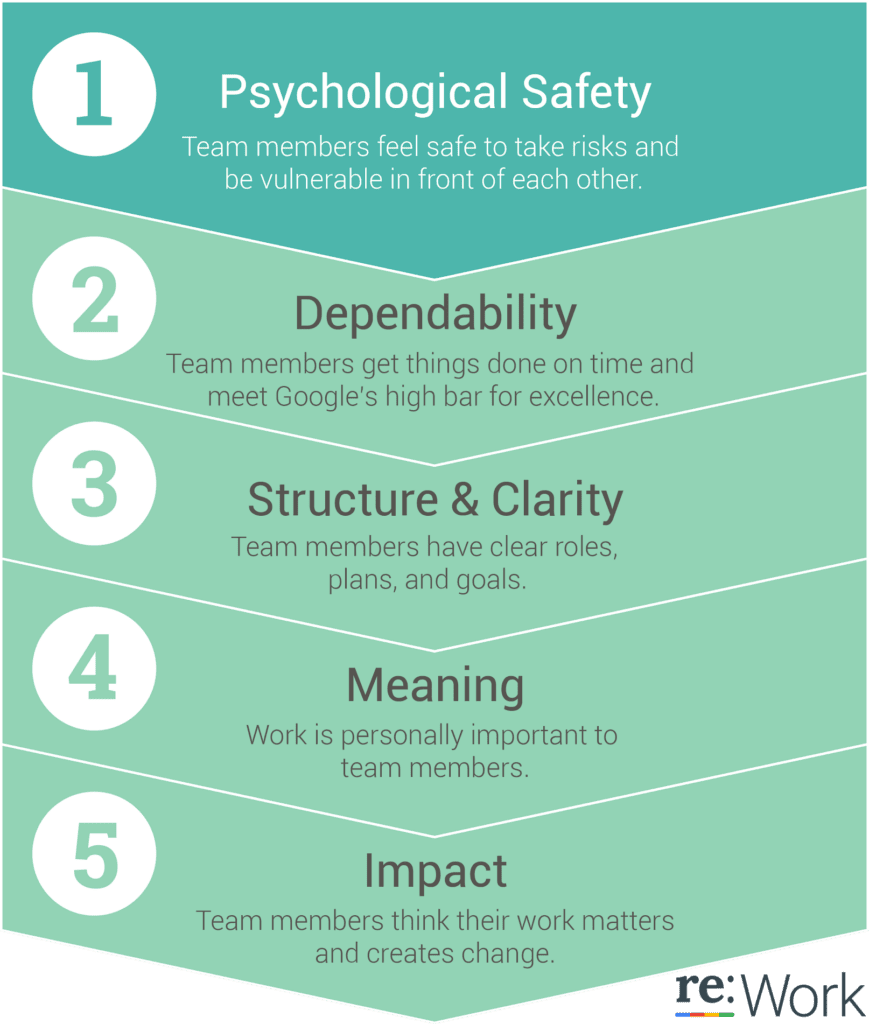Your startup exploded out the blocks. Your metrics rose impressively. You bootstrapped your way to growth, or super-charged it with external funding. You’re growing fast… 15, 50, 150 people. The opportunity is still enormous, but your early agility is showing signs of strain. There’s challenges all around you. People are stressed. True team leadership is now needed, but it’s at this point that it so often fails.
Startup growth is never linear, it’s a rollercoaster, but similar challenges are observable on the ride. Written for CEOs and other leaders building their startup leadership team, this article identifies 5 common factors that cause problems for a team. I offer up some advice about how to navigate these challenges based on my experience helping leadership teams through this critical stage of growth.

No clear Leadership Vision, including Values & Culture
Businesses that have recently raised millions of pounds in funding are primed to embark on a serious programme of growth. A shared common vision, mission, strategy and plan to navigate the path forward is critical to success. Whilst much work has often been done to formulate this at the business-level, it’s rarely in place at the leadership team level.
In How to develop a leadership culture in your business, I suggest taking time out as a leadership team to discuss the vision, values and culture of leadership that you want to create. Most startup leaders never call this meeting, an opportunity missed as it’s the most productive few hours you’ll ever spend. If the whole leadership team is aligned, the synergies will flow through your whole organisation. Questions to discuss include:
- What do we want great leadership to look like?
- What are our leadership team values and how do we embody them?
- What is the job of a leader, and what are the associated behaviours?
- How do we define our leadership culture and weave it in into the business’s overarching company culture?
- How will we communicate our leadership Vision, Values and Culture?
More advice:
- Remember, these aren’t the Vision and Values for the business. These are the Vision and Values for how you will lead, both as an individual and as an Executive / Senior Management Team.
- Remember that leadership culture is not the same thing as overall business culture. According to the Centre for Creative Leadership: “It’s the way things are done — the way people interact, make decisions, and influence others. Leaders’ own conscious and unconscious beliefs drive decisions and behaviors, and repeated behaviors become leadership practices. Eventually these practices become the patterns of leadership culture”.
Lack of leadership team alignment
For all the excitement that comes with startup growth, senior teams are often plagued by doubts and insecurities just below the surface. Leaders are highly capable, but often inexperienced. The executive and senior management team is still not fully formed and is yet to find its feet. Investors are applying leverage and Board dynamics are equally nebulous. Organisational design is fluid and reporting lines ambiguous.
The business may have grown off the back of a powerful idea and business model, but a lack of unity and focus can lead to paralysis, confusion, tension and conflict. These factors combined can derail growth in even the most promising startup. Here’s a few ways to avoid these challenges:
- Double down on the first challenge. Early, open and honest conversations about leadership vision, values & culture will go a long way to improving alignment upfront. Most business do not have these conversations, take this opportunity to have them in yours.
- Is poor alignment a function of skill gaps? CB Insights discovered that not having the right team was the third most common reason for failure and that a diverse team with different skill sets was often cited as being critical to success. The co-founder and CEO of Zirtual, Maren Kate Donovan, forced to lay off 400 employees overnight, admitted that a key mistake was not bringing a CFO onto the board: “If [a board] had actually been in tune, this would have been caught like six months ago… I blame myself on a lot of this, in not hiring more experienced people, but it wasn’t any maliciousness beyond just naivete… In retrospect if we had a senior finance person and a senior ops person it would have been a completely different story.”
- Consider hiring a senior people lead, who has clear responsibility for overseeing the challenges discussed here, along with developing your people more generally. Ed Batista has a superb post on this: The Truly Strategic People Leader.
You’re reading one of my most popular articles. Here’s more:
How do you show up as a senior leader? Take A fresh look at executive presence.
Get a grip on your diary with 8 Time Management Techniques for Leaders (based on real CEO coaching conversations).
The Duck-Rabbit & the Polarities of Leadership, how embracing challenges with a both/and mindset, as opposed to trying to solve them as problems with an either/or approach, opens up whole new ways forward.
How Vertical Development helps new leaders transform explores the distinction between horizontal development, which focuses on what you know, and Vertical Development, which concerns how you think.
Low team Psychological Safety
Combined challenges can result in a distinct lack of psychological safety amongst startup leadership teams.
Psychological safety refers to an individual’s perception of the consequences of taking an interpersonal risk or a belief that a team is safe for risk taking in the face of being seen as ignorant, incompetent, negative, or disruptive. In a team with high psychological safety, teammates feel safe to take risks around their team members. They feel confident that no one on the team will embarrass or punish anyone else for admitting a mistake, asking a question, or offering a new idea.
Google re:Work – Guide: Understand team effectiveness
First coined by Harvard Professor Amy Edmondson, psychological safety is now recognised as being the most important attribute for high performing teams. In 2012, Google published the findings of Project Aristotle a tribute to Aristotle’s quote, “the whole is greater than the sum of its parts”. The goal was to answer the question: “What makes a team effective at Google?” The researchers found that what really mattered was less about who is on the team, and more about how the team worked together.
How can you create Psychological Safety amongst a startup leadership team?
Typically startup leadership teams have only recently been formed. Like any relationship, it takes time to get to know one another, to understand what makes a colleague tick, or the opposite, to know someone’s boundaries – how far you can push them, and what’s to far. Developing psychological safety means going beyond simple team building exercises to more fundamental considerations about how you will work together, respectfully.
Google have shared the results from their research about How to foster Psychological Safety, and Edmondson offers three simple things individuals can do to foster team psychological safety in her TEDx talk:
- Frame the work as a learning problem, not an execution problem.
- Acknowledge your own fallibility.
- Model curiosity and ask lots of questions.
Lack of basic management and leadership skills
In the corporate world, leadership development is catered to individuals who already have many years of leadership experience. But a lot of leaders in startup businesses are new to the experience. In his research into How Top Silicon Valley Companies Accelerate Leadership Development, Nick Petrie identified that technology leaders commonly need to develop basic management skills but “many miss these early on and it can follow them their whole career”.
Not long ago you were part of a small team of people with a big idea that you thought could change the world. Now you are responsible for a rapidly growing team who are looking at you for direction. Your burden of responsibility has increased dramatically and you need to learn to lead quickly.
Leading on the job: advice for new leaders
Here’s what to do:
- Check out my collection of articles for new leaders and 8 books that all new leaders should read. But they’re just a miniscule selection from all the superb content that’s out there. Try and grab a short amount of time each day to absorb what’s available and start to build your own impression of what great leadership looks like.
- Ask yourself what sort of leader are you now, and what sort of leader do you want to be? Who do you look up to for leadership inspiration and what can you learn from them? Get a coach and/or mentor.
- For inspiration, check out these Leadership Blueprints from Luc Levesque, Shopify’s VP Growth which includes Blueprints from tech’s most prominent leaders like Claire Hughes Johnson, COO at Stripe, Ried Hoffman and Satya Patel from Homebrew VC. Helping clients write their own Leadership Blueprints is a common focus of my coaching sessions.
Tension in the machine
In Trillion Dollar Coach: The Leadership Handbook of Silicon Valley’s Bill Campbell, former Google CEO and Chairman Eric Schmidt explains that for the next generation of technology-led businesses to succeed:
They must continually develop great products, and to do that, they must attract smart creatives and build an environment where these employees can succeed at scale.” [But there is] another, equally critical, factor for success in companies: teams that act as communities, integrating interests and putting aside differences to be individually and collectively obsessed with what’s good for the company.”
However, getting teams to act as perfect community is a real challenge, not least because of human’s hardwired Machiavellian tendencies:
As anyone who has ever been a member of high performance teams can tell you, teams don’t always operate this way. Such teams are by their nature populated with smart, aggressive, ambitious, strong world, opinionated people with large egos. These people may work together, but they can also be rivals, competing for career advancement. Or if they are executives, they are often positioning their divisions or other organizational silos against each other – in status conflicts – to capture more resource and glory. People may want to rise to the next level, and it is awfully tempting to pursue that goal alongside or above the goal of team success. All too often, internal competition takes centre stage and compensation, bonuses, recognition, and even office size and location become the ways to keep score. This is problematic in such an environment, selfish individuals can beat altruistic ones.
This sort of intragroup conflict in teams will have according to several studies and common sense, negative effects on team outcomes. But teams of people who subordinate individual performance to that of the group will generally outperform teams that don’t. The trick, then, is to corral any such team of rivals into a community and get them aligned in marching toward a common goal. A 2013 paper presents a set of ‘design principles’ for doing this, such as developing strong mechanisms for making decisions and resolving conflicts. But adhering to these principles is hard, and it gets harder when you add in factors such as fast-moving industries, complex business models, technology driven shifts, smart competitors, sky high customer expectations, global expanding, demanding teammates… in other words the reality of managing businesses today.
As Patrick Pichette, Google’s former CFO puts it when you have all of these factors in play and a team of ambitious, opinionated, competitive smart people, there there is tremendous ‘tension in the machine’.
Schmidt and his co-authors make a recommendation that works across all the challenges discussed here, and is discussed in detail in Want to build a better leadership team? Get a coach:
To balance the tension and mould a team into a community you need a coach someone who works not only with individuals but also with the team as a whole to smooth out the constant tension, continuously nurture the community, and make sure it is aligned around a common vision and set of goals. Sometimes this coach may just work with the team leader, the executive in charge. But to be most effective, the coach works with the entire team.
I’m Richard Hughes-Jones, an Executive Coach to CEOs and senior technology leaders.
My clients are transitional founders, CEOs and executives in high-growth technology businesses, the investment industry and progressive corporates.
Having often already mastered the technical aspects of their craft, I help my clients navigate the complex adaptive challenges associated with executive-level leadership and growth.
Find out more about my Executive Coaching services and get in touch if you’d like to explore working together. You can also read my Complete Guide to Finding the Right Executive Coach for You.


